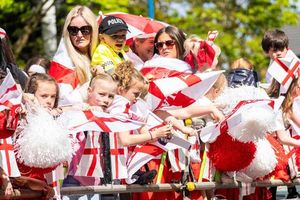The Elbaf Arc of One Piece has fans abuzz with its dramatic revelations and the introduction of new characters, particularly Loki, the Accursed Prince of Elbaf. This arc, long anticipated by enthusiasts, is finally delivering on its promise of depth and storytelling, inviting fans to analyze both Loki's character and the underlying lore of the series.
Loki, previously mentioned during the Wholecake Island arc, has now made his compelling debut, sparking debates on his morality. Described as mischievous and troublesome, his reputation as the ‘accursed prince’ raises questions about the nature of his actions, especially the presumed murder of King Harald, his father. This event could align with Eiichiro Oda's prevailing theme: rulers portrayed as villains often have darker truths behind their narratives.
Throughout the One Piece saga, characters like Wapol, Imu, and Kaido exemplify corrupt rulers, often misunderstood by their subjects. The storyline suggests Loki may follow this precedent, leading fans to speculate about his true allegiance. Shaggy, one fan commentator, contends, 'Loki hides his true feelings behind his harsh words,' hinting at depths yet to be explored.
Accompanying Loki’s arc is the enigma surrounding the legendary Sun God Devil Fruit previously associated with Elbaf royalty. This fruit endows its user with immense power, echoing the established lore surrounding the Sun God Nika, known for both liberation and destruction. Chapter 1130 shocked the fandom as it revealed Loki’s connection to this transformation, leading many to ponder the true nature of his abilities.
Another remarkable aspect of the Elbaf Arc deals with the cyclical nature of destruction embedded within the One Piece narrative. Long believed to have undergone two significant world-ending calamities, this notion finds relevance as the arc connects it to the characters' past actions and the potential for future conflict. Each new wrinkle ups the stakes for the Straw Hats, but also raises fundamental questions about power, legacy, and the morality of leadership.
Through these developments, Oda continues to employ storytelling devices familiar to long-time fans. Just as Luffy once held hands with figures like Shirahoshi and Momo—enabling them to overcome their adversities—he may extend his aid to Loki, promoting growth and change. Loki, adored by animals, displays traits reminiscent of other beloved characters who were once misunderstood.
The narrative twist involving King Harald cannot go unnoticed. Like most One Piece rulers, he appears to uphold peace, favoring trade and diplomatic initiatives; yet, his behavior suggests ulterior motives. Could this lead to suspicious dealings with the World Government? His inclination to arrange Loki's political marriage with Charlotte Lola points to hidden intentions rather than genuine peace advocacy. Why would anyone align with Big Mom’s lineage if peace were truly the goal?
The complexity of characters like Loki and King Harald interweaves with the broader societal commentary found within One Piece. Oda masterfully juxtaposes ambitious themes with character growth and speculation, continuously urging readers to examine their previous assumptions about character dichotomies.
Fans must also grapple with the character of Nika, the Sun God. Traditionally portrayed as benevolent, past revelations hint at darker interpretations of Nika's deeds. Recent insights describe him as both liberator and destroyer—capable of eliciting fear as well as joy. This dynamic could propel Loki’s role, casting shadows over the powers expressed through the Sun God fruit, leading to various theories among enthusiasts.
Theories abound among fans, with many speculating about the different iterations or interpretations of Nika. Some believe multiple Sun God Devil Fruits could exist—one embodying destruction, the other liberation. Such a premise would fit snugly within One Piece’s grander narrative vision, echoing themes of resurrection and cyclical destiny.
Perhaps most gripping is the confidence built around the character St. Figarland Shamrock—Shanks’ long-hidden twin—in the continuing storyline. The emergence of legendary characters like this and their relationship with powerful families, including those of Elbaf, only serves to amplify the narrative’s momentum and intrigue as the arc of One Piece ascends.
Stepping back from our analysis, readers are reminded of the layered storytelling and character work Oda has imbued within One Piece. The Elbaf Arc, fresh yet steeped deep within backstory and lore, continues to depict nuances binding past, present, and prospective future arcs together.
Each of these variables, from Loki's uncertain nature to the hidden truths of rulers within the series, compels audiences to engage with the text beyond mere surface action. The stakes are rising significantly as the saga progresses, and the arc promises to intertwine the fate of Elbaf and the Straw Hat Pirates provocatively.



